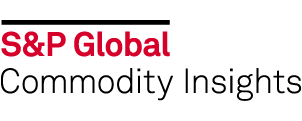
Download Report IHS CEH Report : Paint and Coatings Industry Overview (Chemical Economics Handbook 2019)
PDF by S&P Global Commodity Insights; IHS Markit
Information
Format: PDF Language: English Pages: 254 Publisher: S&P Global Commodity Insights; IHS Markit Publitshion date: 2019 ISBN: 118851
$49
Delivery time: Maximum 24 hours
Description
The coatings industry is one of the most heavily regulated industries in the world, so producers have been forced to adopt low-solvent and solventless technologies in the past 40 years, and will continue to do so. The number of coatings producers is large, but most are regional producers, with only 10 or so large multinationals. Most of the large multinationals have expanded operations in fast-growing areas like China and India. The most noteworthy trend has been consolidation, especially among the largest producers. After a decade of steady growth, production in Asia accounts for 50–55% of the total. Production and consumption are nearly equal in each country, as trade is limited to relatively small quantities of high-value product. Generally, coatings grow in tandem with the economy, so growth will continue to focus on the developing world.
Global production of coatings was about 54.5 million metric tons in 2018, valued at $145 billion. After a decade of steady growth, production in Asia accounts for 50–55% of the total. Production and consumption are nearly equal in each country, as trade is limited to relatively small quantities of high-value product. Generally, coatings grow in tandem with the economy, so growth will continue to focus on the developing world. There is still good potential for growth in developing countries, as per capita consumption is only 3.4 kilograms in India, for example, compared with 19 kilograms in the United States. In China, production grew by 11% annually in the last 10 years, but is expected to slow to 5-6% for 2018–23. Per capita consumption has risen quickly in China, to about 12.5 kilograms per capita in 2018.
The number of coatings producers is large, but most are regional producers, with only 10 or so large multinationals. Most of the large multinationals (e.g., PPG, Akzo Nobel, Kansai Paint, Nippon Paint) have expanded operations in fast-growing areas like China. The most noteworthy trend has been consolidation, especially among the largest producers. In mid-2017, Sherwin-Williams (third largest in the world in 2016) completed the acquisition of Valspar (#5), to become the second-largest global producer. Other attempts at consolidation continue, as an example, PPG (#1) tried to acquire Akzo Nobel (#3) in 2017. The multinationals continue to grow market presence in China, often by acquiring or forming joint ventures with domestic producers.
The coatings industry is one of the most heavily regulated industries in the world, so producers have been forced to adopt low-solvent and solventless technologies in the past 40 years, and will continue to do so. Generally, prices have stayed relatively stable in recent years after some upheavals in the early 2010s, but large price increases have been limited to some resins (e.g., epoxies and silicones) and titanium dioxide pigment. There have been some supply disruptions of some low-volume raw materials, especially sourced form China, caused by environmental restrictions imposed by governmental authorities.
Raw material costs account for 50–60% of the cost of making coatings, as capital charges are low (typically only 5%) but costs for technical support tend to be high (20–30%).
$49
Delivery time: Maximum 24 hours
